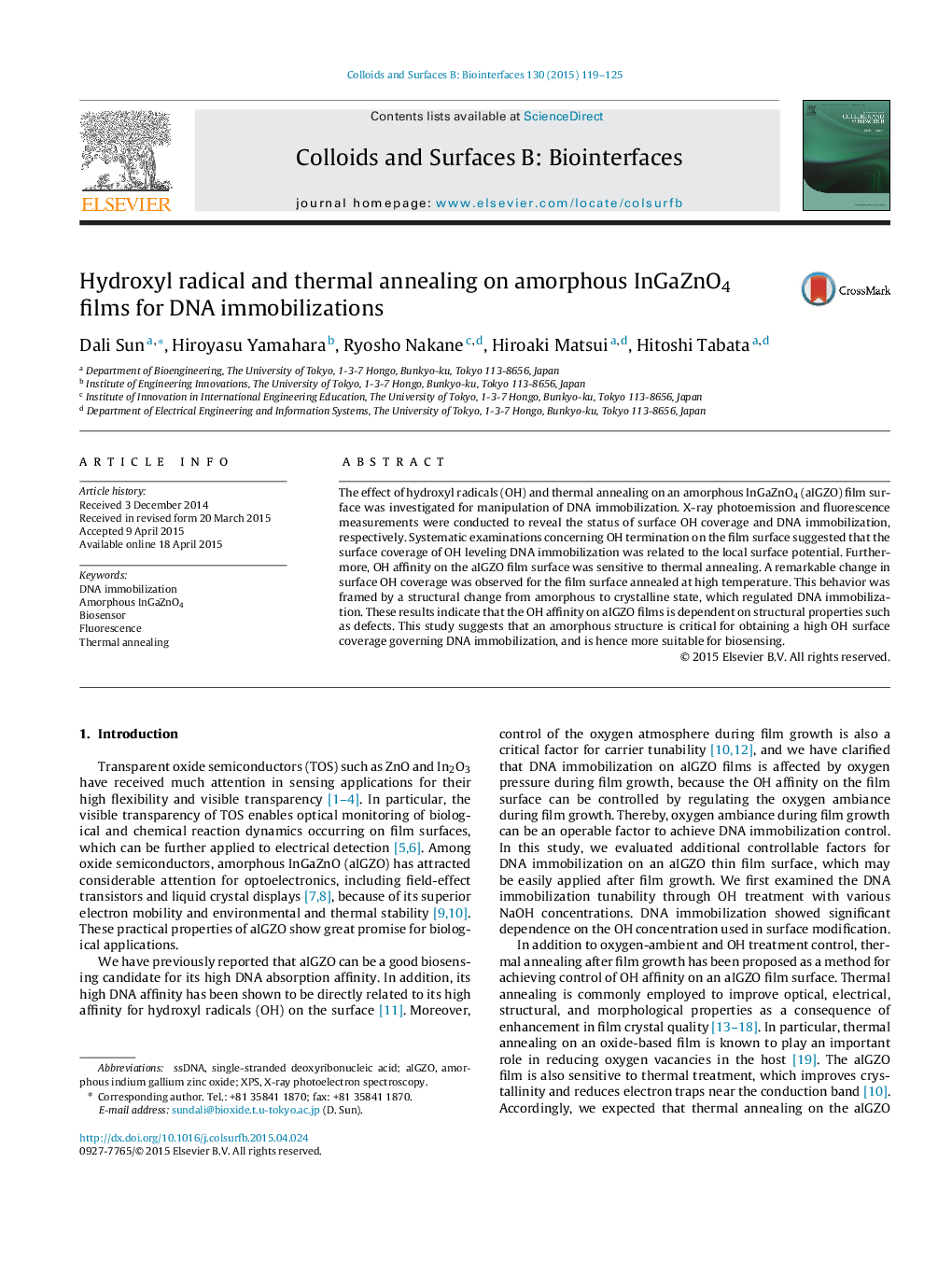| Article ID | Journal | Published Year | Pages | File Type |
|---|---|---|---|---|
| 599326 | Colloids and Surfaces B: Biointerfaces | 2015 | 7 Pages |
•Effect of hydroxyl radical and thermal annealing on aIGZO film was investigated.•DNA immobilization shows significant dependency to OH treatment concentration.•Surface OH coverage leveling DNA immobilization may relate to local surface potential.•Thermal annealing results in remarkable suppression of surface OH coverage.•With superior surface OH affinity, amorphous film is more suitable for biosensing.
The effect of hydroxyl radicals (OH) and thermal annealing on an amorphous InGaZnO4 (aIGZO) film surface was investigated for manipulation of DNA immobilization. X-ray photoemission and fluorescence measurements were conducted to reveal the status of surface OH coverage and DNA immobilization, respectively. Systematic examinations concerning OH termination on the film surface suggested that the surface coverage of OH leveling DNA immobilization was related to the local surface potential. Furthermore, OH affinity on the aIGZO film surface was sensitive to thermal annealing. A remarkable change in surface OH coverage was observed for the film surface annealed at high temperature. This behavior was framed by a structural change from amorphous to crystalline state, which regulated DNA immobilization. These results indicate that the OH affinity on aIGZO films is dependent on structural properties such as defects. This study suggests that an amorphous structure is critical for obtaining a high OH surface coverage governing DNA immobilization, and is hence more suitable for biosensing.
Graphical abstractFigure optionsDownload full-size imageDownload as PowerPoint slide
